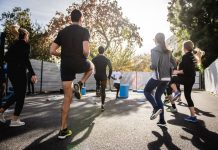Musicians seem different than the rest of us; they seem to have astonishing memories and can multi-task better than non-musicians. Drummers, for example, seem to fly through complicated routines while their hands barely stop moving. New research has found that drumming actually changes the drummers’ brain structure.
Published in Brain and Behavior, this research focused on studying the brains of drummers with MRI (magnetic resonance imaging) to explore the changes that occur with the brain’s neuroplasticity when playing musical instruments. Previous studies of a similar nature had explored musical instruments, but none had focused specifically on drummers.
The researchers compared 20 musicians who had played drums for 17 years on average (and also spent more than 10 hours practicing each week) with 24 control participants who had no musical experience. Each group was asked to play drums while being monitored by the MRI.
The professional drummers showed distinct differences from the nonmusical control subjects in the area of the brain responsible for motor skills, specifically in the corpus callosum. The corpus callosum influences the planning of motor skills and is located between the two hemispheres of the brain. Drummers had thicker fibers contained in the corpus callosum which connected the two hemispheres of the brain. They had less fibers than the nonmusical subjects, but their fibers were much thicker. Thicker fibers mean that the drummers transmit information between the two hemispheres at greater speed than those with no musical experience.
Another difference between the brains of musicians and non-musicians was that the brain seemed to require less activity to produce these effects. The drummers’ brains were organized and able to run more efficiently in a pattern called “sparse sampling.” Their brains required less activity to produce the effects of motor planning and motor skills than those who were not professional musicians.
Drumming changes the brain in ways that can be measured, and drum circles can be mood boosters and produce beneficial psychological effects. It’s been part of the human experience since the first ancient humans produced drums.
References
Schlaffke, Lara, et al. “Boom Chack Boom—A Multimethod Investigation of Motor Inhibition in Professional Drummers.” Brain and Behavior, vol. 10, no. 1, 4 Dec. 2019, doi:https://doi.org/10.1002/brb3.1490.




































Great article! It gives me another possible tool for brain training, the kind of life coaching I seek to indulge in. It's one of my first principles that, “How you do anything is how you do everything.” The brain, I believe, distributes learning across the whole brain, to other practical memories that have formed good habits. So drummers might drum out a rhythm, consciously or subconsciously, while they are doing other tasks. And they will see and hear patterns the rest of us miss, therefore may create new versions of assembled thoughts that lead to social and material invention. They would, I think, also have stronger inhibitions between the two hemispheres, more acute “stop and go” between the context and details of attention.